Note: This entry was written soon after my journey through Artsakh in 2018. Since then, Azerbaijan has launched attacks on Artsakh, capturing territories mentioned here (e.g. Shushi) that was previously free for us to visit when it was under Armenia.
Two weeks ago, I didn’t know anything about Armenia, let alone Nagorno-Karabakh or “Artsakh” as it is called by Armenians, its old name. I saw the region on my Maps.me app, noticed the lack of hard borders, and knew it wasn’t a “real” internationally-recognized country. When I traveled to Yerevan, the capital of Armenia, I hadn’t planned on visiting it. But in my hostel, I talked to a Dutch guy who had been there and that sparked my interest into going. Why? Because it was easy to enter but technically illegal because it is officially part of Azerbaijan and the only way in is via routes through Armenia, which controls the territory now as a result of a war that began in 1988.
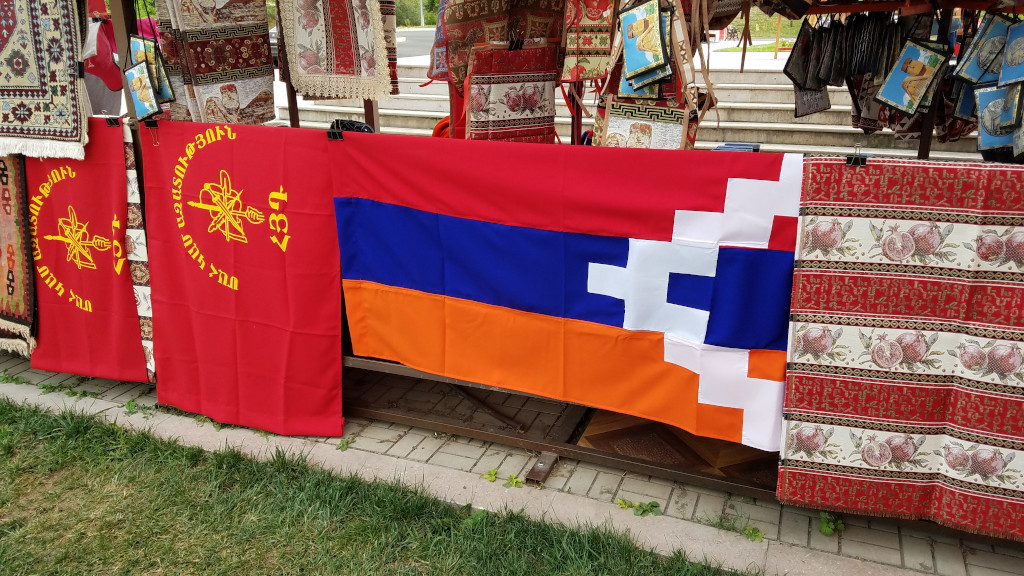
In Yerevan, I met a Norwegian guy named Torje, who was also interesting in going. So we took a shared minivan (“marshrutka”) from Yerevan to Goris, a town just outside Artsakh because Torje and I wanted to visit the Tatev Monastery first. After visiting the monastery (by riding the “world’s longest aerial tramway” to reach it), we checked into our guesthouse run by a gentleman named Karen. At the guesthouse, we met Sebastian, a German backpacker. We three were the only ones staying there so we ended up hanging out and getting to know each other. At night, Karen invited us to have some home-made wine with him, made from grapes grown in his beautiful and spacious backyard garden. Karen didn’t speak any English so we used our Google Translate app to converse with him in Russian. As we were drinking and chatting, the conversation arrived at the topic of family. We learned that Karen had a son studying in France and was due to return home in a few weeks. But then, Karen also mentioned an older son who had died in the Armenian-Azerbaijani war. It wasn’t clear when he lost his son but Karen mentioned that his son would be in his mid 30s (like Torje and myself) had he been alive. Karen, clearly trying to stop himself from tearing up, raised his glass and toasted his son’s memory, and we joined him. It was a very sobering moment and this set the tone for the next few days.
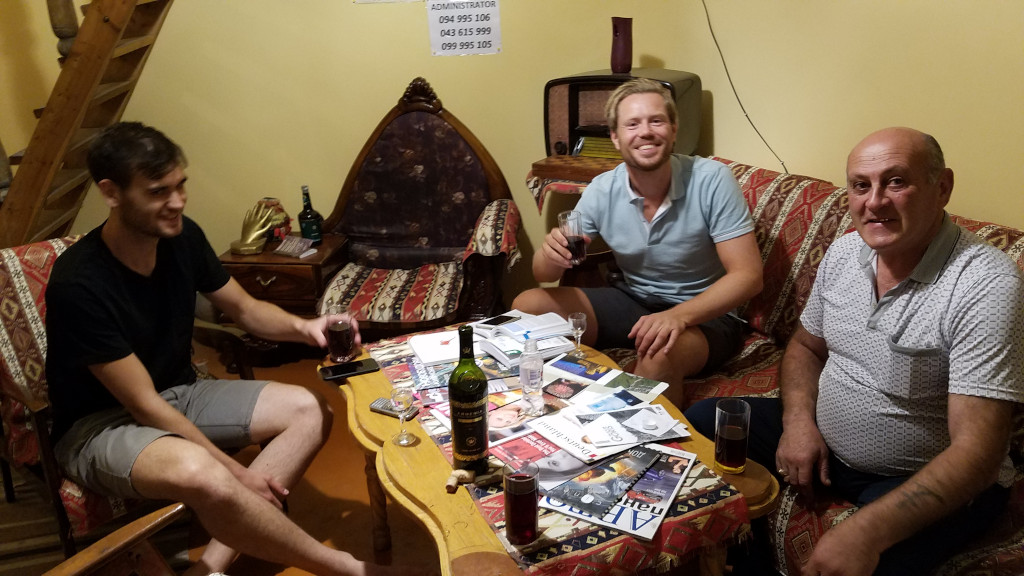
The next morning, after saying goodbye to Karen, we travelers made our way into Stepanakert, the capital of Artsakh. In our shared minivan, we met a Polish couple, an Italian guy named Daniel, and a pair of Chinese girls. When we got to Artsakh, the Polish couple went off with the driver to seek other accommodation, while the rest of us followed Torje’s lead to meet a well-known guide in the Artsakh region, Susanna, to check out a guesthouse she herself recently opened. Negotiations with pricing were initially messy but we worked it out in the end. It was decided that the four guys would stay in the 4-bed room (a nice coincidence), and the two Chinese girls would stay in a separate room next door. Susanna, being an expert on the region and even mentioned in Lonely Planet (when your name and contact info are in Lonely Planet, you are never starved for business), offered customized tours. Again, negotiations over pricing were messy because one guy in our group was very much against paying Susanna’s asking price. Artsakh is not a region that has much tourism, so there isn’t much competition; this meant little to no baseline prices that one can research in online forums. After some frustration from both sides (our’s and Susanna’s), we finally met in the middle with itinerary and pricing. The girls, a little mad about how much they had to pay for their room and as a result, not wanting to hand more money over to Susanna, decided they would find their own tour instead.
With accommodation and plans for the next few days sorted out, we had to take care of a very important task; we had to go to the Ministry of Foreign Affairs and get our Artsakh visa. We needed this to get out of Artsakh when we returned to Armenia.
When all that was taken care of, we walked around and the group eventually split up; the Chinese girls went off to the Tourist Info office (a kiosk really) to obtain more info about tours while the guys walked to the “We are our mountain” statues, also affectionately referred to as “Grandpa Grandma” statue. These were basically giant statues of heads on a hill. It symbolizes the body of the people as being part of the land. The guys shared a meal at a restaurant across the street (in a “pavilyon” outdoor set-up) and had some delicious “shashlik”, basically meat on skewers.
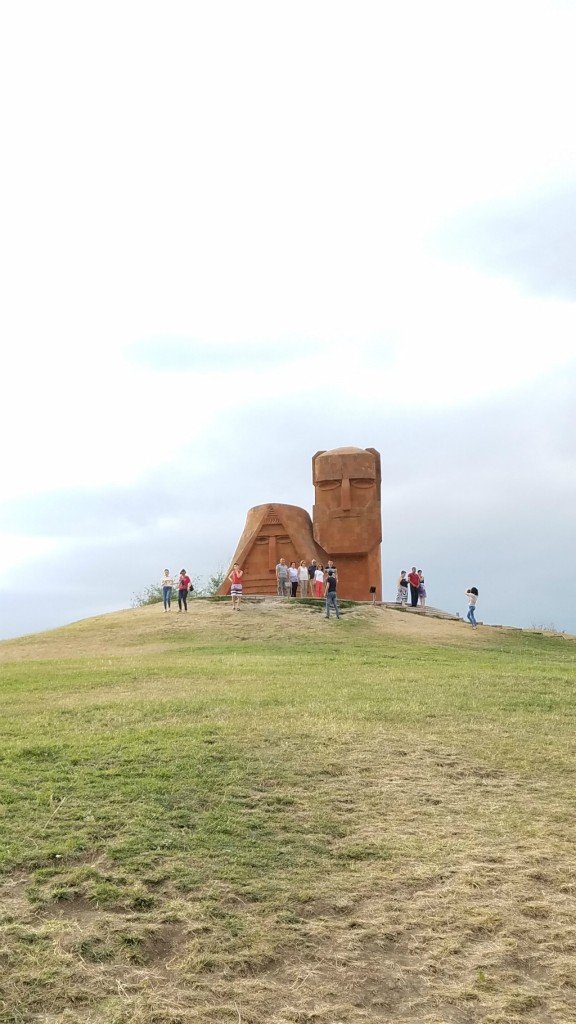
The next day, everyone gathered to eat breakfast. The Chinese girls went off on a tour they found while the guys waited for Susanna. When she arrived and beckoned us to get into her car to begin our tour, we were surprised to find Susanna’s guy friend in the driver’s seat. Torje, Sebastian, and myself barely fit into the backseat of Susanna’s car, Daniel being the odd man out if Susanna occupied the front seat. We had thought it would be Susanna driving, one of us in the front seat, and the rest of us in the back. For some reason, the driver could not see the issue. He had a somewhat heated exchange with Susanna about how we should all be able to fit inside. The three of us, still sitting in the back, stared at him. Was he not able to clearly see that we three barely fit into the back, let alone have one more person (and of a somewhat portly nature I might add), squeeze in? We were adamant no one was going to sit on anyone’s lap as we were all grown men. After ten minutes, Susanna convinced him to not go, which he reluctantly agreed to. Staring at each other and laughing at the situation later, we set off.
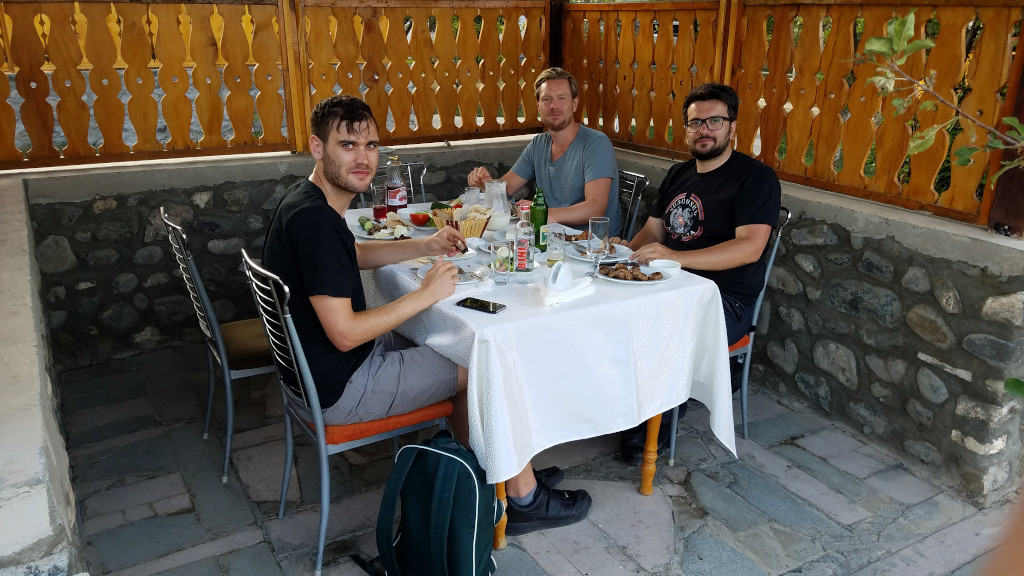
My father pronounces “sushi”, the food, as “shoo shi”. So it was funny when our first stop was the town of Shushi. I can now tell him I went to “shoo shi”. Joking aside, this town was a major battleground between the Azeris and Armenians in the early months of the war as Shushi was strategically located on a high point overlooking Stepanakert. The Azeris used this to their advantage, raining hellfire on Stepanakert constantly. Long story short, it wasn’t until one night when the Armenians launched a daring assault on Shushi and liberated it that turned the tide of the war. Apparently, if Shushi had not been taken and the Armenians lost Stepanakert, the Azeris might very well have won the war.
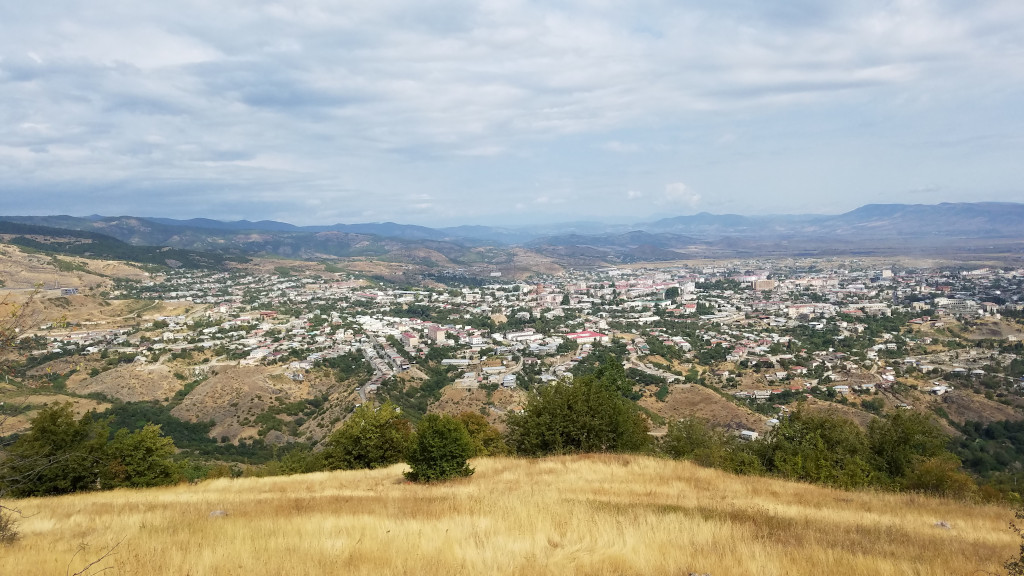
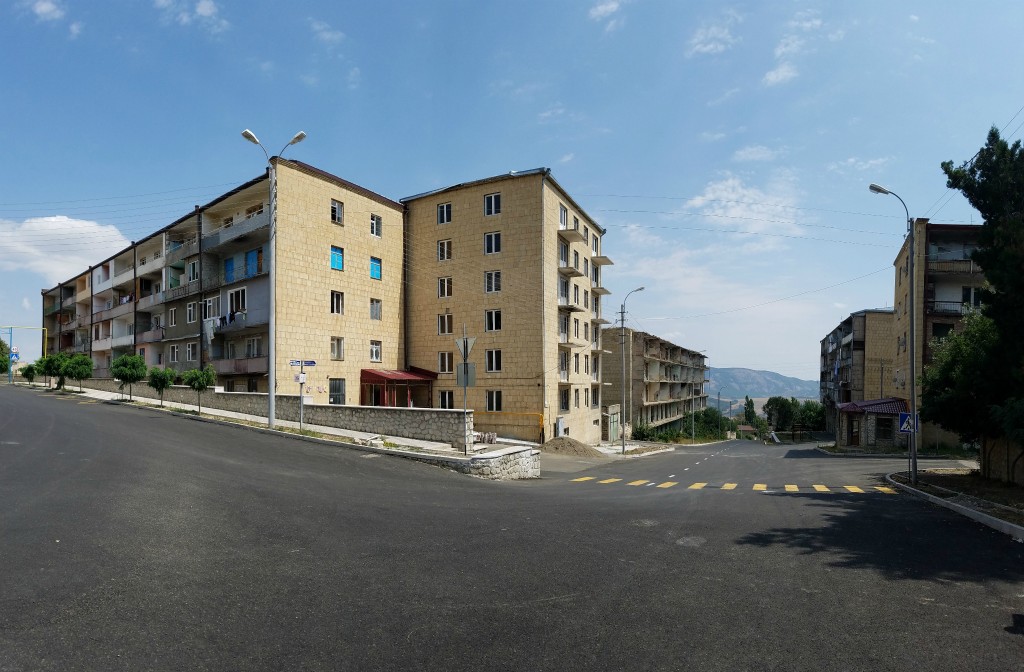
Anyway, during our journey to Shushi, we took a quick stop to see the restored version of the first tank that led the assault up the hilly windy road to Shushi. Of course, the men who drove the tank knew that they’d be immediately targeted and killed. It always amazes me how a sense of patriotic duty that create immense courage in human beings.
Shushi is a town with a mix of a few restored buildings (like the church) with plenty of destroyed (or at least damaged) ones. We stopped at a church that was iconic for the people of Shushi and witnessed Sunday church mass going on. It was a nice coincidence to get our timing down like this because for all of us, this was our first time being at a mass in an Armenian Apostolic Church. Outside on the church grounds, there were many soldiers. I wasn’t sure why they were around but Susanna explained that it was probably a day off for them and with nothing to do, they were there to attend church. I asked a group of four soldiers if I could take a picture with them and they agreed. They were all around 18 years of age and most were actually from Yerevan.
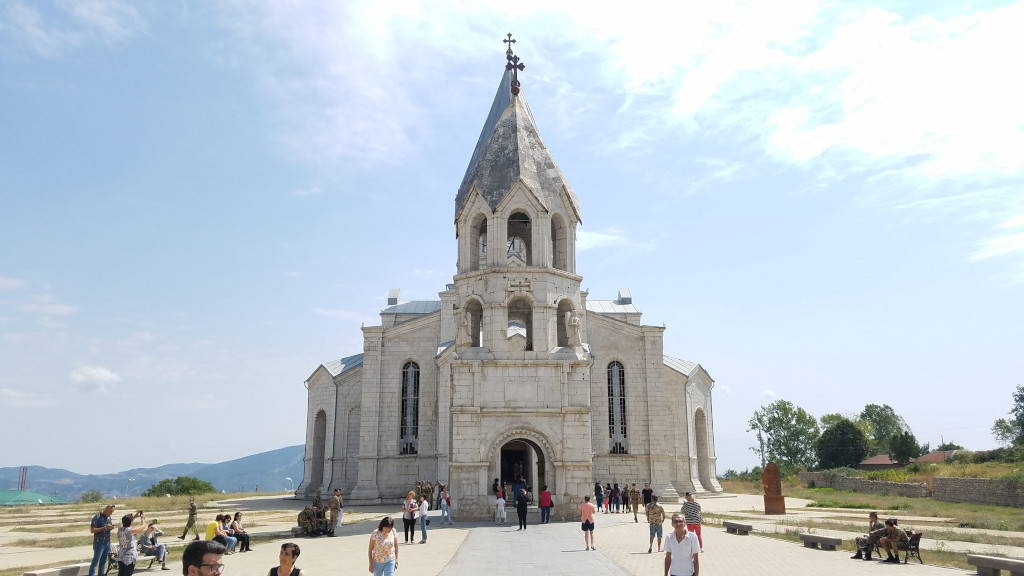
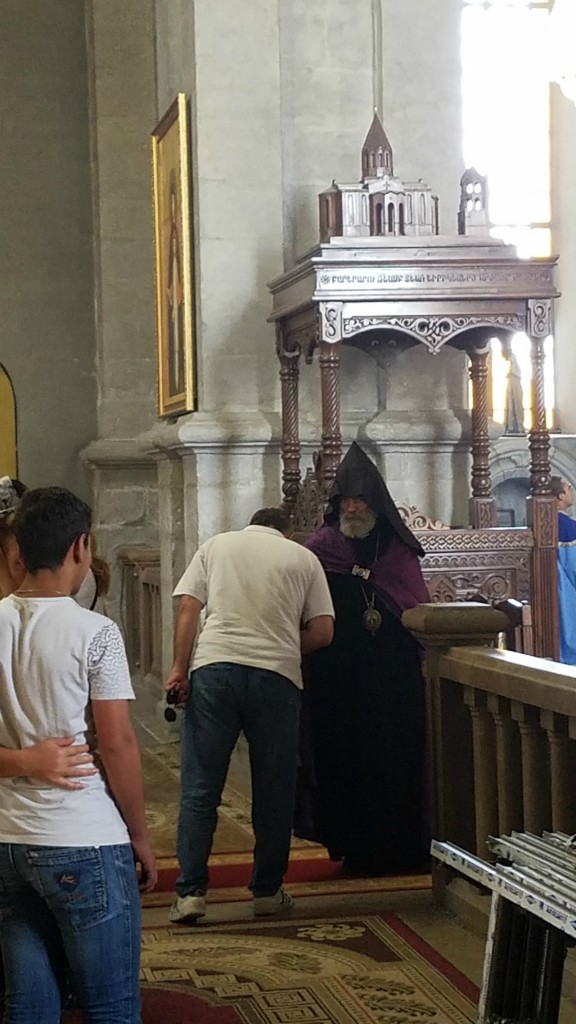
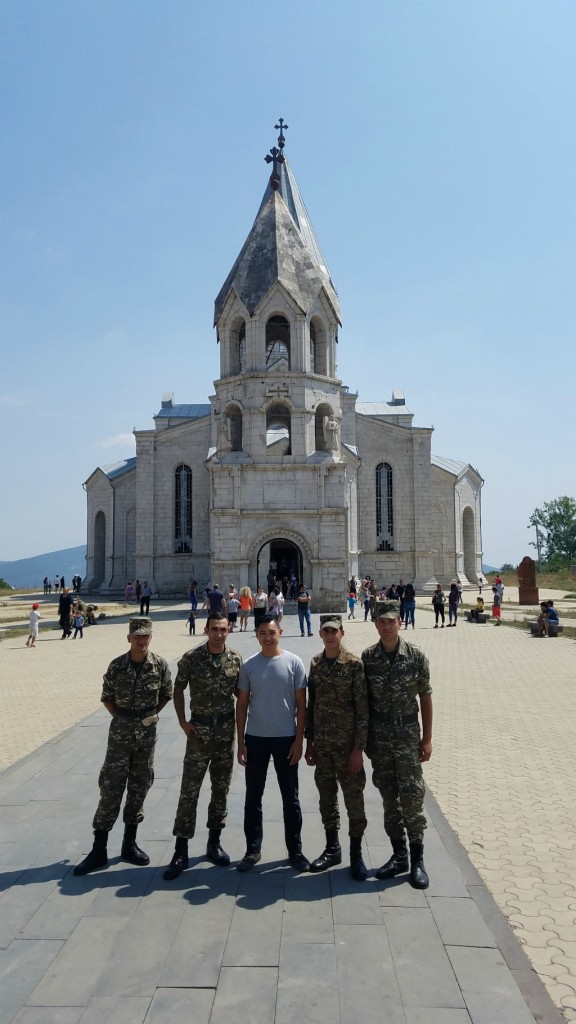
From Shushi, we then took a drive to Gandzasar Monastery. But I’m not here to write about monasteries. We did end our day with a delicious dinner in which we had “zhingalov hats”, a very chapati-like bread filled with plenty of mixed greens.
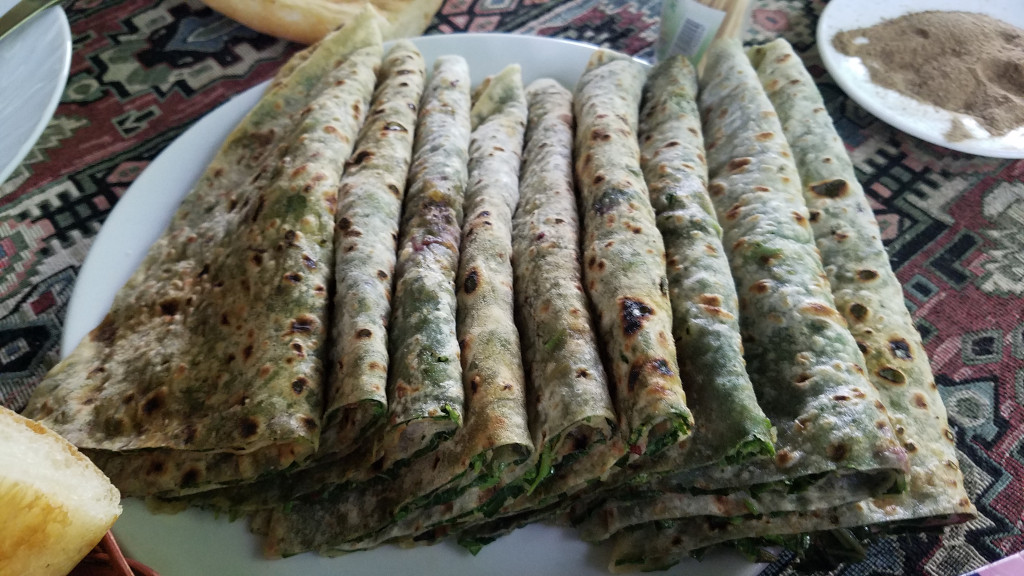
The next day, we took off for Day 2 of our Artsakh tour. While yesterday’s was more cultural and historical, today’s was more raw and real because it involves the present.
We began our day by visiting the “Museum of Fallen Soldiers” and “Museum of Missing Persons”. These museums were filled with walls and walls of pictures of, you guessed it, fallen soldiers and missing people. Again, a sobering experience.
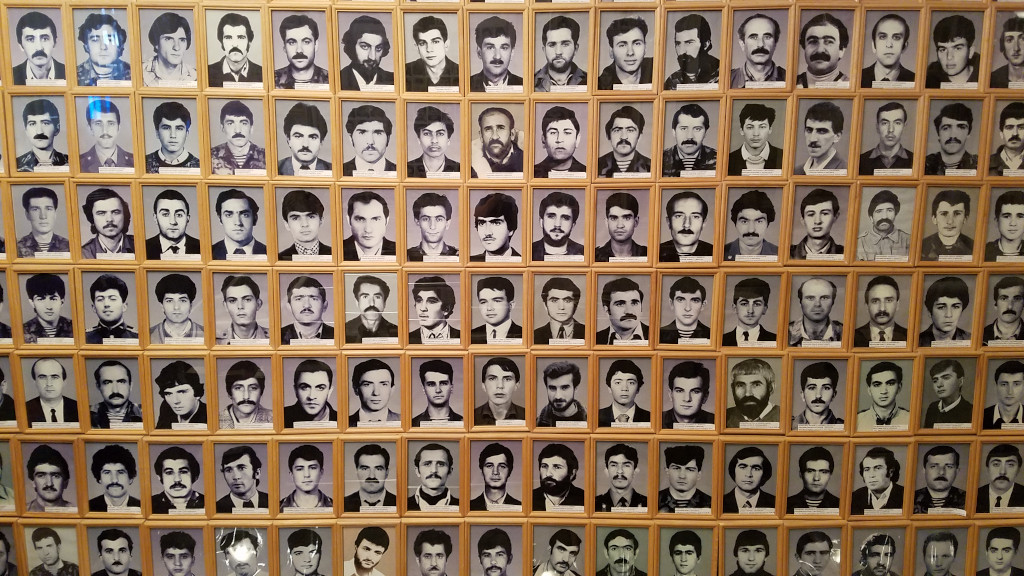
Later, we went to a village called “Nor Maragha”, meaning “New Maragha”. A lot of the residents here escaped from the village of Maragha in 1992 when the Azeri forces stormed in and were killing Armenians. (To read up on this particular attack, see https://en.wikipedia.org/wiki/Maraga_massacre). Susanna arranged for us to visit an elderly couple who managed to escape the attack, Mikhail and Susanna. We sat in their humble home and they told us what they saw and experienced on that fateful day in 1992, with our guide Susanna doing all the translating. Although they didn’t lose members of their own family, they knew many people, neighbors, who were either killed or captured by the Azeri forces.
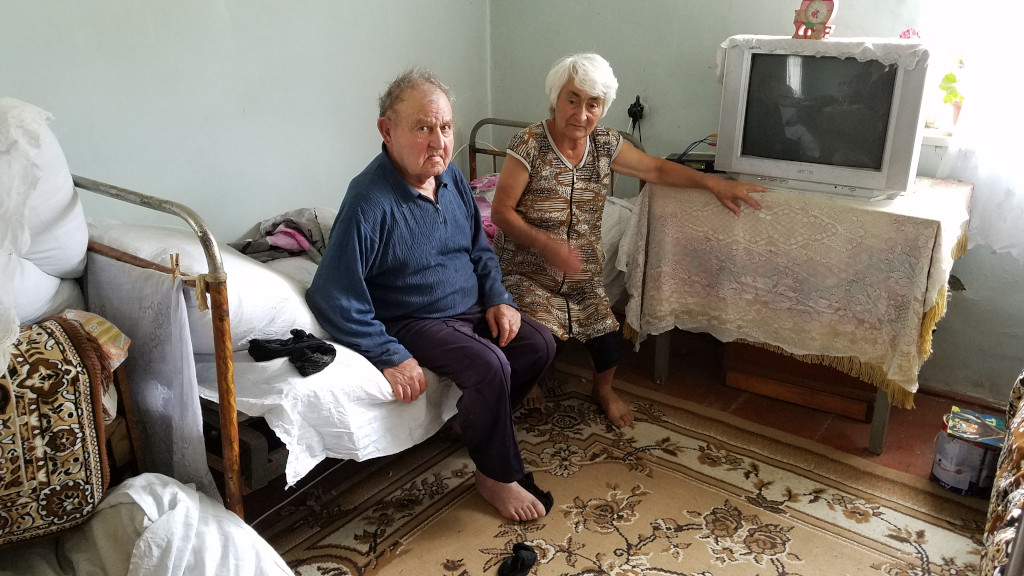
Apart from a stop at Tigranakert (basically some ruins with some history) and the “ghost city” of Aqdam (from a distance, as Susanna said we couldn’t actually drive into the city, much to the dismay of Daniel and Torje), we concluded our day by visiting (part of) the front line, a village called Madagiz. This village had a high concentration of Armenian soldiers on high alert. If Azerbaijan was going to invade, as they did in April 2016, Madagiz would be one of the first places to see action. Normally, tourists would not be able to enter Madagiz but Susanna was a well-known person in Artsakh due to her work in tourism and non-profit work she does for the people. We were privileged to obtain a better look at a front line of a war that is currently in a state of ceasefire although as I understand it, this isn’t respected because soldiers still die in sniper attacks in the front lines. I didn’t take many photographs, mostly because we were not allowed to of all things military. We did make a visit to an abandoned church which Susanna liked very much because she said it was preserved when the Azeris first held the village because that was where they’d hide their missiles. Armenians, being a religious bunch, would never bomb a church, which made it such a good hiding spot. We also visited a caviar farm while we were there, which is a weird location to have a caviar farm because that very same place had been bombed before but the Armenians rebuilt it.
From Madagiz, Torje, Sebastian, and I were dropped off at Madakert to catch a connecting taxi which would take us back to Yerevan. Daniel would stay the night in Madakert. We bid our goodbyes and I felt a little sad. Up until now, I didn’t write much about our guide Susanna but she is an extraordinary lady who was born Artsakh and herself had to escape with her family when the Azeris were closing in her village. Her brother serves as a Major in the Armenian military and her son is turning 18 next year and will have to serve. She told us of all the people she has met while working for her non-profit that helps aid and assist people in Artsakh. She is a lecturer at the university in Stepanakert, educated, well-traveled herself, and even at one point got invited to visit the House of Lords in London, which is a privilege. Her heart is with her people and it shows with the Type-A drive she showed each day, being a mother of four, a tour guide, a guesthouse owner, a lecturer, a wife, a “servant” to the people of Artsakh (her nickname is apparently the “Queen of Artsakh”). Her phone wouldn’t stop ringing with calls from many people about many things and she snuck in quick naps while we tourists were out exploring. How someone has that much motivation to do important work for her people is inspiring. I wondered if I could ever contribute to society the way she does. I want to find a cause and really devote myself to it. I told her that one day, Artsakh would have a statue of her. She laughed. But I know that her name would not be easily forgotten. I told her I hoped to bring my nephews back to Artsakh one day, hopefully, when it was at peace.
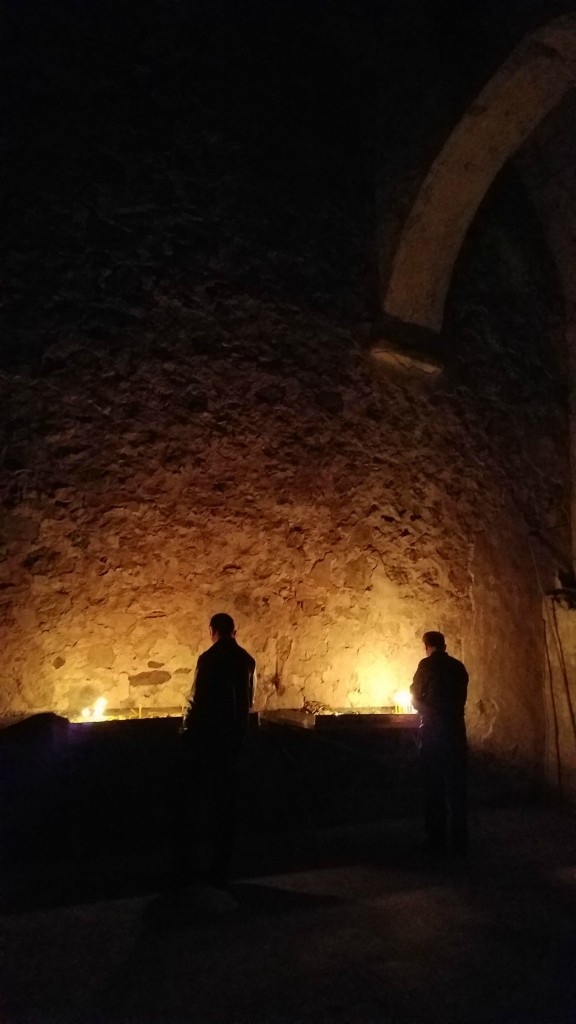
As of 2024, Stepanakert came under the threat by Azerbaijan. To protect the remaining population, Armenia’s government asked everyone to evacuate the city – and then relinquished control to Azerbaijan. Susanna and her family now reside in Yerevan, still praying for Artsakh’s re-liberation again one day.